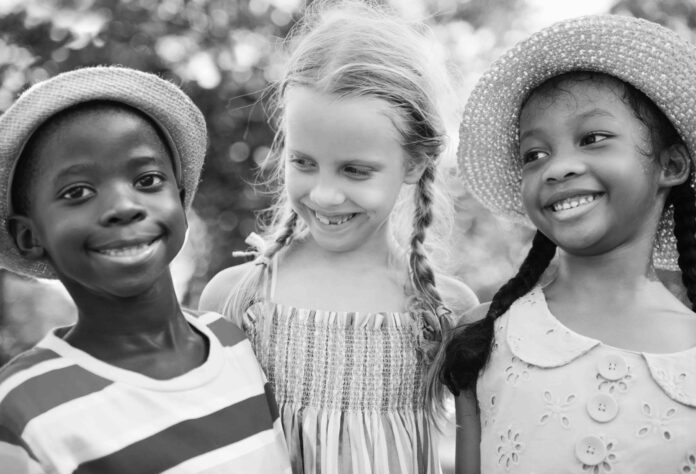Battling Child Poverty: The Struggle to Protect Children’s Rights
Welcome to the world of Children’s Rights
As a society, we have come a long way in championing human rights. However, there is still a lot of work to be done when it comes to protecting the rights of children.
Children are often seen as vulnerable, but what we forget is that every child has inherent rights that must be safeguarded. Children’s Rights refer to the basic human rights that are specifically applicable to minors.
It includes things like their right to education, healthcare, shelter, and protection from violence and exploitation. These rights give children a voice and help ensure their protection.
The United Nations Convention on the Rights of the Child (UNCRC) established in 1989 is an international agreement outlining these fundamental rights for children across the world. The UNCRC provides an essential framework for governments around the world in shaping policies and programs around protecting children’s rights.
The Impact of Child Poverty on Children’s Rights
Child poverty is a global issue affecting millions of children worldwide. Poverty affects every aspect of life for these children and can have long-lasting impacts on their future opportunities and wellbeing as adults. When we talk about poverty in relation to child rights, some of the most pressing concerns include lack of access to basic needs such as food, shelter, clothing, healthcare; limited educational opportunities; and increased risk for exploitation/abuse.
Children living in poverty may struggle with finding enough food or nutritious meals regularly due to financial constraints on their families. They may not have access to proper sanitation facilities or clean drinking water either.
These factors can lead to malnutrition or poor health outcomes which could impact development throughout childhood. Poverty impacts education too- impoverished families cannot afford educational resources like textbooks or uniforms so that kids might miss out on school entirely due to lack of transportation or necessary fees associated with attending classes.
It may also force them into working early instead so they could contribute to the household income. This leaves children with no option but to work in exploitative conditions that put their safety and well-being at risk.
Understanding the impact of poverty on children’s rights is essential in guiding policies and programs that protect vulnerable children from these devastating effects. It’s time we address this issue and ensure every child has access to their basic rights, irrespective of financial situations.
Children’s Rights
As an expert writer, it’s important to understand what children’s rights entail. Children’s rights are the fundamental freedoms and entitlements that every child is entitled to simply because they are human beings.
These rights are typically recognized by international law and enshrined in various treaties and declarations. One of the most important of these treaties is the United Nations Convention on the Rights of the Child (UNCRC), which was adopted in 1989.
The UNCRC is a legally binding international agreement that has been ratified by nearly every country in the world, with only a few exceptions such as the United States. The UNCRC recognizes four main categories of children’s rights: survival, development, protection, and participation.
Each of these categories encompasses a range of specific rights that are crucial for ensuring that children can grow up healthy, happy, safe, and empowered. The right to survival includes access to basic needs such as food, shelter, healthcare, clean water, and sanitation.
This right is particularly important for children who live in poverty or who are affected by conflict or natural disasters. The right to development includes access to education, playtime, cultural activities and healthcare services throughout childhood.
Ensuring all children have access to quality education including vocational training can be key for their futures as adults with economic opportunities. The right to protection includes protection from abuse or violence from caregivers or authorities within their community or home-family environment , exploitation (including child labor) , neglect (including lack-of-care) etc., In addition protecting them from war-time situations that may expose them to danger including traumatic events like refugee experiences where displacement from their homes may expose them potentially hazardous situations like malnourishment due lack of food security measures .
The right to participation includes giving children a voice so they can express opinions regarding decisions impacting their lives including child marriage arrangements forced upon at young age by family members/community members. It is important to remember that all of these rights are interconnected, and that violating one can lead to violations of others.
For example, failing to provide a child with adequate food and shelter can impact their physical and mental development, as well as expose them to abuse or violence. Next, let’s take a closer look at how child poverty impacts these rights, and what can be done to address this critical issue.
The Devastating Reality of Child Poverty
Child poverty is a critical issue that continues to plague many countries worldwide. According to UNICEF, an estimated 385 million children are living in extreme poverty.
This number is staggering and shows the magnitude of the problem at hand. The exact definition of child poverty varies from country to country, but it generally refers to children living in households that fall below the poverty line.
Poverty is a multifaceted issue that affects many aspects of a child’s life, including access to basic necessities such as food, shelter, and healthcare. One of the main causes of child poverty is economic inequality.
In many countries, wealth is concentrated in the hands of a few individuals or groups, leaving millions of others struggling to make ends meet. Children are often among the most vulnerable members of society and are more likely to be affected by poverty than adults.
Statistics on child poverty are sobering. According to UNICEF, around 1 billion children worldwide live in impoverished conditions.
In sub-Saharan Africa alone, almost half of all children live below the poverty line. Additionally, more than 90% of all child deaths related to malnutrition occur in low- and middle-income countries.
Child poverty has serious consequences for individuals as well as societies at large. It can lead to poor health outcomes and limit educational opportunities for children who grow up under difficult circumstances.
Causes Of Child Poverty
There are multiple causes for child poverty ranging from political instability and climate change/environmental factors; however experts identify economic inequality as one major root cause for this issue across almost all regions around the world. Other key factors include lack or absence basic social services such as healthcare systems which can result in conditions such as malnutrition which may have long-term consequences on overall health development later on in life Additionally inadequate education systems can limit opportunities for families with limited resources while political corruption may lead to misuse of public funds which are intended for social services that would benefit children living in poverty.
Global Child Poverty Statistics
An estimated 385 million children currently live in extreme poverty and this number is projected to increase due to the effects of COVID-19. Sub-Saharan Africa has the highest rate of child poverty with almost half of all children living below the poverty line.
Other regions such as South Asia, East Asia and the Pacific also have alarmingly high rates. In some countries, the issue of child poverty has been compounded by different factors such as child labor, forced marriages and lack or absence of basic social services such as healthcare systems which can result in conditions such as malnutrition which may have long-term consequences on overall health development later on in life
As societies around the world grapple with how best to address this critical global challenge, effective interventions are needed that specifically target underlying causes while also providing relief for families most affected by it. Such interventions could include programs aimed at empowering families economically and improving access to basic social services among others.
Impact of Child Poverty on Children’s Rights
Lack of Access to Basic Needs (Food, Shelter, Healthcare)
Child poverty can have devastating effects on a child’s access to basic needs such as food, shelter, and healthcare. When families are struggling financially, they often cannot afford nutritious food or a safe place to live. In extreme cases, children may go without food for days or even suffer from malnutrition.
Additionally, living in inadequate housing can lead to health problems such as respiratory issues from mold and poor air quality. Lack of access to healthcare is another major concern for children living in poverty.
Without insurance or the ability to pay out-of-pocket expenses, many families are unable to provide necessary medical care for their children. This can lead to untreated illnesses and chronic health conditions that impact a child’s overall well-being.
Limited Educational Opportunities
Children living in poverty often have limited educational opportunities due to financial strain. They may not have access to quality schools or resources such as books and technology needed for learning.
Additionally, when parents are struggling financially they may need their children to work instead of attending school so they can contribute income towards the family. Education is crucial in breaking the cycle of poverty but when it is not accessible it perpetuates the problem further hindering these children from reaching their full potential.
Increased Risk for Exploitation and Abuse
Children living in poverty are at an increased risk for exploitation and abuse because they are often vulnerable and lack support systems that could protect them from abusive situations. For instance, girls in impoverished areas often face higher rates of sexual abuse due to desperation for money which drives them into transactional sex practices with older men who exploit them with promises of material gain.
In addition children may end up working at a young age which exposes them harsh labor conditions increasing chances of physical injury or even death. These children often work in hazardous jobs such as mining and domestic servitude.
Breaking the Poverty Cycle
It is clear that child poverty has a negative impact on basic human rights for children worldwide. The lack of access to basic needs, limited educational opportunities, and increased risk for exploitation and abuse are only a few of the serious problems caused by child poverty. To break this cycle, governments need to make more deliberate efforts to address the root causes of child poverty such as inequality and lack of job creation opportunities.
Non-governmental organizations (NGOs) also play an important role in protecting children’s rights where governments have failed. Such organizations help provide access to basic necessities like food, healthcare and education so that every child has an equal opportunity to succeed regardless of their social economic background.
The Importance of Child Rights and Poverty Eradication Programs
Clearly, there is a dire need for more action towards eradicating child poverty globally while upholding their Human Rights. We all have a role to play in ensuring that future generations do not have to suffer under these conditions.
Programs designed by government or other non-state actors should be aimed at reducing inequalities by providing resources like education, health care services, nutrition programs etc. This can help reduce disparities between rich and poor families thus improving overall living standards. Every effort counts towards making significant progress in eliminating childhood poverty while at the same time advocating for kids’ rights protection.
Government and Non-Governmental Organizations’ Role in Protecting Children’s Rights
Overview of Government Policies and Programs Aimed at Reducing Child Poverty
Governments play a crucial role in ensuring that children’s rights are protected, including their right to live free from poverty. One way to address child poverty is through social welfare programs aimed at reducing inequality. In the United States, for example, the government provides financial assistance through programs like Temporary Assistance for Needy Families (TANF), Supplemental Nutrition Assistance Program (SNAP), and Medicaid.
These programs provide vital support to families living below the poverty line. In addition to social welfare programs, governments also implement policies aimed at reducing child poverty.
For instance, minimum wage laws ensure that workers receive a living wage that can help alleviate poverty. The Affordable Care Act (ACA) also provides affordable healthcare options for families who would otherwise struggle with medical expenses.
However, it’s important to note that government policies and programs alone may not be enough to eradicate child poverty completely. There are still many children who slip through the cracks of these systems due to factors such as inadequate funding or strict eligibility criteria.
Examples of Non-Governmental Organizations Working to Protect Children’s Rights
Non-governmental organizations (NGOs) also play a significant role in protecting children’s rights and addressing child poverty. Many NGOs focus specifically on providing assistance to marginalized communities where children may be particularly vulnerable. One example is Save the Children, an international organization dedicated to improving the lives of children around the world.
Save the Children works on a variety of issues related to child well-being, including education, nutrition, health care access, and more. Another example is UNICEF (United Nations International Children’s Emergency Fund), which works in over 190 countries around the world promoting children’s rights and providing humanitarian aid when necessary.
In addition to large international organizations, there are also many smaller NGOs that work on a grassroots level to support children in their communities. These organizations often partner with local businesses and community leaders to provide resources and support to those who need it most.
NGOs can also be effective advocates for policy change, working with governments and other stakeholders to ensure that children’s rights are protected. Advocacy efforts may include lobbying for stronger social welfare programs, pushing for changes to minimum wage laws, or raising awareness about the impact of poverty on children’s well-being.
Conclusion
Government policies and non-governmental organizations working together can play a vital role in protecting children’s rights. Adequate funding, policy changes and advocacy play an important role in ensuring that children receive the support they need.
By prioritizing investments in policies aimed at reducing child poverty, both governments and NGOs can help create a more equitable world where all children have access to the resources they need to thrive. It is an ongoing effort that requires collaborative long-term action but there’s no doubt that it is worth the investment as our future depends on it – after all, our children are our future!
Conclusion
Recap of Key Points
In this article, we have learned that children are entitled to certain inherent rights, as outlined in the United Nations Convention on the Rights of the Child (UNCRC). These include the right to survival, development, protection, and participation.
Unfortunately, child poverty is a widespread issue that impedes children’s access to these fundamental rights. Child poverty is caused by a multitude of factors and is prevalent worldwide.
It restricts children’s access to basic needs such as food and shelter and limits opportunities for education. The consequences can be dire – increased risk for exploitation and abuse.
Call to Action for Individuals
As individuals, it is our responsibility to advocate for protecting children’s rights. There are many ways we can help support organizations working towards this cause.
One way is by donating money or volunteering our time to organizations that focus on helping impoverished children gain access to basic necessities like food and shelter. Another way we can get involved is by educating ourselves on the issues surrounding child poverty and spreading awareness among our family and friends.
When more people understand the scale of this problem, we can work together more effectively towards finding solutions. Additionally, we need to hold governments accountable for their policies regarding child poverty reduction efforts.
We should advocate for policy changes aimed at alleviating child poverty in our communities. Overall, protecting children’s rights requires a collective effort from individuals, non-governmental organizations (NGOs), governments, and society as a whole.
Every action counts in making a positive difference in the lives of impoverished children around the world. Let us join together in creating a better future where all children can thrive without limitations imposed by poverty or lack of access to their fundamental rights.



